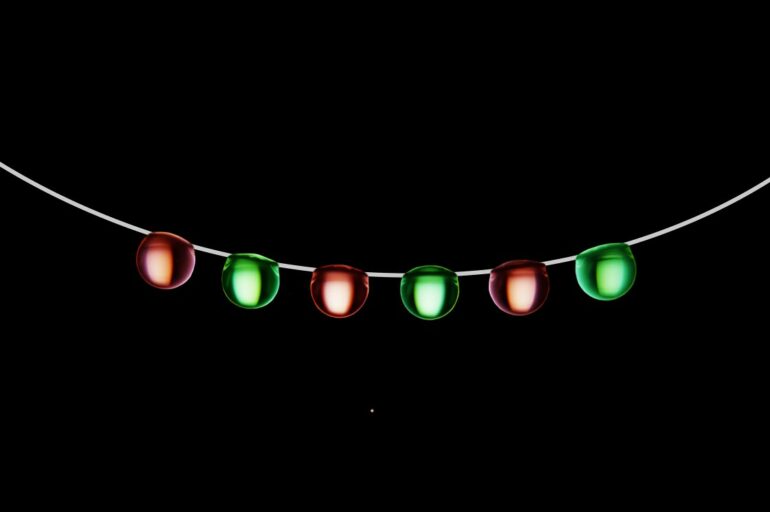When two water droplets merge on an inclined super-hydrophilic wire, their movement speed increases.
They also create something visually stunning.
New research from Northwestern Engineering’s Kyoo-Chul Kenneth Park reports on how necklace-like, beautiful droplets on a fiber self-propel upon their coalescence—increasing their speed by up to 270 percent of their pre-coalescent speed. The findings could help researchers optimize many environmental processes, such as fog collection, mist elimination, filtration, oil/water separation, and microplastics collection.
Park, assistant professor of mechanical engineering in the McCormick School of Engineering, presented his work in the paper “Coalescence-induced Propulsion of Droplets on a Superhydrophilic Wire,” published December 5 as the cover article of the latest edition of Applied Physics Letters.
Park tested droplets with different sizes and viscosities on wires with various diameters, looking for the optimal combination for speed and energy. When he came across the right ratio, he found that their joined speed increased nearly three-fold.
“The increase of the bulk droplet speed is due to the speed difference of two wedges of the coalesced droplet in damped oscillation upon coalescence, mainly powered by the surface-to-kinetic energy transition,” said Park, whose research interests include multi-length scale surface fabrication, thermal-fluids engineering, and bio-inspired surface engineering for a sustainable future.
By better understanding droplet transport on a cylindrical wire, Park is one step closer to optimizing a key area of his research: fog harvesting. As water scarcity grows as a global challenge, fog harvesters—hydrophilic mesh sheets stretched across two vertically aligned posts—have emerged as an inexpensive and accessible way to collect water from air. Yet they’re inefficient, with water droplets often escaping through the mesh if the wires are sized incorrectly.
“This work could provide the theoretical basis for a new way to design 3D fog harvesters that outperform conventional 2D meshes,” Park said.
Another potential use is in the development of medicine; more specifically, novel methods of biomedical filters.
“The new phenomenon and mechanism about the sudden increase of droplet speed along a super-hydrophilic wire will benefit various fields including biomedical research that requires a fast transport of liquid, such as masks and filters to protect people from airborne microplastics and droplets containing viruses,” Park said.
Building on this work, Park and his research team will investigate further applications such as mist elimination and microplastics-containing droplet collection.
More information:
Youhua Jiang et al, Coalescence-induced propulsion of droplets on a superhydrophilic wire, Applied Physics Letters (2022). DOI: 10.1063/5.0124560
Provided by
Northwestern University
Citation:
Christmas-colored droplets hint at solutions for fog harvesting (2022, December 15)



